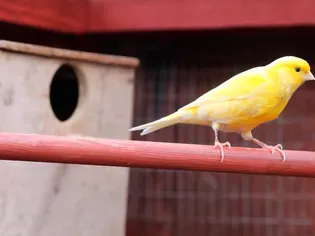5 Fun Facts About Macaws
Updated on 05/26/24

5 Astonishing Facts About Macaws: Unlocking the Secrets of the Rainbow Birds
Macaws, with their vibrant plumage and captivating personalities, are among the most beloved birds on earth. Discover their extraordinary world through these five fascinating facts:
1. The Symphony of Color: Macaw Plumage
The kaleidoscope of colors adorning macaws is a testament to nature's artistry. Each feather boasts a unique mosaic of pigments, resulting in hues that range from fiery reds and oranges to emerald greens and azure blues. This remarkable palette serves as a vibrant expression of identity and a means of communication within their flocks.
Example: The Hyacinth Macaw, adorned with its striking cobalt blue feathers, is the largest parrot species on earth and a symbol of Brazil's rich biodiversity.
2. Masters of Flight: Aerial Acrobatics
Macaws possess exceptional flying abilities, soaring effortlessly through dense rainforests and open skies. Their powerful wings, coupled with their agile bodies, allow them to perform graceful aerial maneuvers, including breathtaking dives and twists.
Example: The Blue-and-gold Macaw, with its distinctive cornflower blue wings and saffron yellow body, is known for its playful and daring flight displays.
3. The Intelligence of the Amazon: Macaw Cognition
Macaws are renowned for their remarkable intelligence, exhibiting problem-solving abilities on par with some primates. Their cognitive prowess allows them to adapt to changing environments, communicate effectively, and form complex social bonds.
Example: The Green-winged Macaw, with its vibrant emerald green wings and scarlet body, demonstrates impressive tool use and cooperative problem-solving within its social groups.
4. Vocal Virtuosos: Macaw Communication
The vocalizations of macaws are as diverse as their plumage. They possess an extensive repertoire of calls, screeches, and squawks, employed for various purposes, including territorial defense, mate attraction, and flock coordination.
Example: The Scarlet Macaw, with its iconic scarlet and yellow feathers, is known for its distinctive "macaw" call, a loud and resonant sound that reverberates through the rainforest canopy.
5. The Beauty and the Beast: Macaw Diets and Nesting Habits
Macaws are primarily fruit and nut eaters, their powerful beaks adapted to crack open hard shells. They also consume insects, palm kernels, and flowers, supplementing their diets with essential vitamins and minerals. As for nesting, macaws seek out tree cavities high above the ground, where they build nests lined with soft materials to protect their eggs and young.
Example: The Military Macaw, with its stunning green plumage and crimson underwings, is known for its impressive nesting displays, where pairs engage in synchronized aerial dances around their nesting site.
Conclusion
The world of macaws is a captivating symphony of color, intelligence, and flight. As we delve into their extraordinary lives, we not only appreciate their beauty but also gain insights into the wonders of nature's diversity. From their vibrant plumage to their remarkable cognitive abilities, macaws stand as a testament to the boundless wonders that the natural world holds.
Explore More Pets

Small Bird Breeds
Gloster Canary: Bird Species Profile

Small Bird Breeds
Java Finch: Bird Species Profile

Small Bird Breeds
Zebra Finch (Chestnut-Eared Finch): Bird Species Profile

Small Bird Breeds
Alexandrine Parakeet: Species Characteristics & Care

Small Bird Breeds
Canary: Bird Species Profile

Small Bird Breeds
Lovebird (Pocket Parrot) Species Profile

Small Bird Breeds
A Guide to Pet Budgie Birds

Small Bird Breeds
Types of Small Parrots
